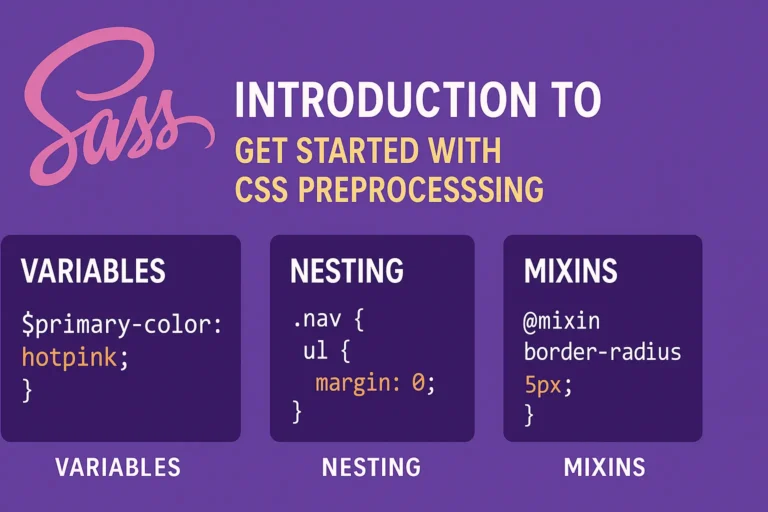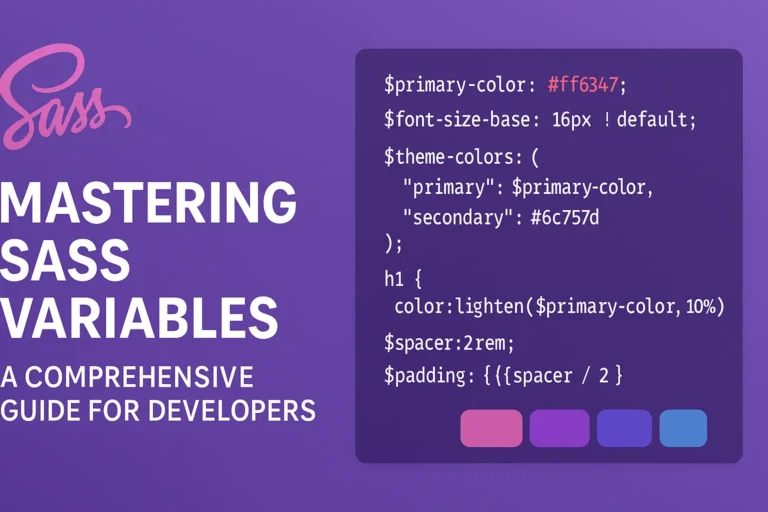As the demand for dynamic and responsive web applications continues to soar, the role of CSS preprocessing tools like SASS (Syntactically Awesome Style Sheets) and emerging alternatives such as PostCSS and CSS-in-JS frameworks becomes increasingly significant. In this article, we’ll delve into the future trends of SASS and CSS preprocessing, comparing PostCSS with SASS and examining the rise of CSS-in-JS in contrast to traditional SASS usage.
PostCSS vs. SASS
SASS has long been a staple in the toolkit of front-end developers, offering features like variables, nesting, mixins, and inheritance that streamline the process of writing and maintaining CSS code. However, PostCSS has emerged as a formidable competitor, presenting a modular and flexible approach to CSS processing.
While SASS provides a comprehensive set of features out of the box, PostCSS takes a more modular approach, allowing developers to choose from a vast ecosystem of plugins to tailor their preprocessing pipeline to specific project requirements. This modular nature of PostCSS offers greater flexibility and scalability compared to SASS, enabling developers to cherry-pick only the features they need while keeping the build process lightweight and efficient.
Let’s take a look at a simple example to illustrate the difference between SASS and PostCSS:
// SASS Example
$primary-color: #007bff;
.button {
background-color: $primary-color;
&:hover {
background-color: darken($primary-color, 10%);
}
}
// PostCSS Example
const postcss = require('postcss');
const colorFunctions = require('postcss-color-function');
const css = `
.button {
background-color: #007bff;
&:hover {
background-color: color(#007bff lightness(90%));
}
}
`;
postcss([colorFunctions()])
.process(css)
.then(result => console.log(result.css));
In this example, while SASS provides built-in functions like darken() to manipulate colors, PostCSS utilizes the postcss-color-function plugin to achieve similar functionality. The difference lies in the approach: SASS bundles these functions by default, whereas PostCSS relies on plugins for additional features.
CSS-in-JS vs. SASS
Another significant trend in CSS preprocessing is the emergence of CSS-in-JS frameworks, which offer a more integrated approach to styling by encapsulating CSS within JavaScript components. This paradigm shift challenges the traditional separation of concerns between markup, styles, and behavior, offering benefits such as improved component encapsulation, better scoped styles, and enhanced developer experience.
While SASS promotes a modular and reusable approach to styling through features like mixins and partials, CSS-in-JS frameworks like styled-components and Emotion take a more component-centric approach, allowing developers to define styles directly within their React components using JavaScript template literals.
Let’s compare a SASS implementation with styled-components:
// SASS Example
$primary-color: #007bff;
.button {
background-color: $primary-color;
&:hover {
background-color: darken($primary-color, 10%);
}
}
// styled-components Example
import styled from 'styled-components';
const Button = styled.button`
background-color: #007bff;
&:hover {
background-color: darken(#007bff, 10%);
}
`;
In this example, styled-components offer a concise and intuitive way to define styles for the button component, eliminating the need for separate CSS files or SASS preprocessing. The styles are encapsulated within the Button component, ensuring better isolation and reusability.
Conclusion
As we look towards the future of CSS preprocessing, it’s evident that both SASS and emerging alternatives like PostCSS and CSS-in-JS frameworks will continue to play a significant role in shaping the way we write and manage styles for web applications. While SASS remains a popular choice for its robust feature set and familiarity among developers, PostCSS offers a more flexible and modular approach, while CSS-in-JS frameworks introduce a paradigm shift in how we think about styling in modern web development.
Ultimately, the choice between SASS, PostCSS, or CSS-in-JS depends on the specific requirements and preferences of each project, with no one-size-fits-all solution. However, by staying informed about the latest trends and exploring new technologies, developers can make informed decisions to optimize their workflow and deliver exceptional user experiences in the ever-evolving landscape of web development.






